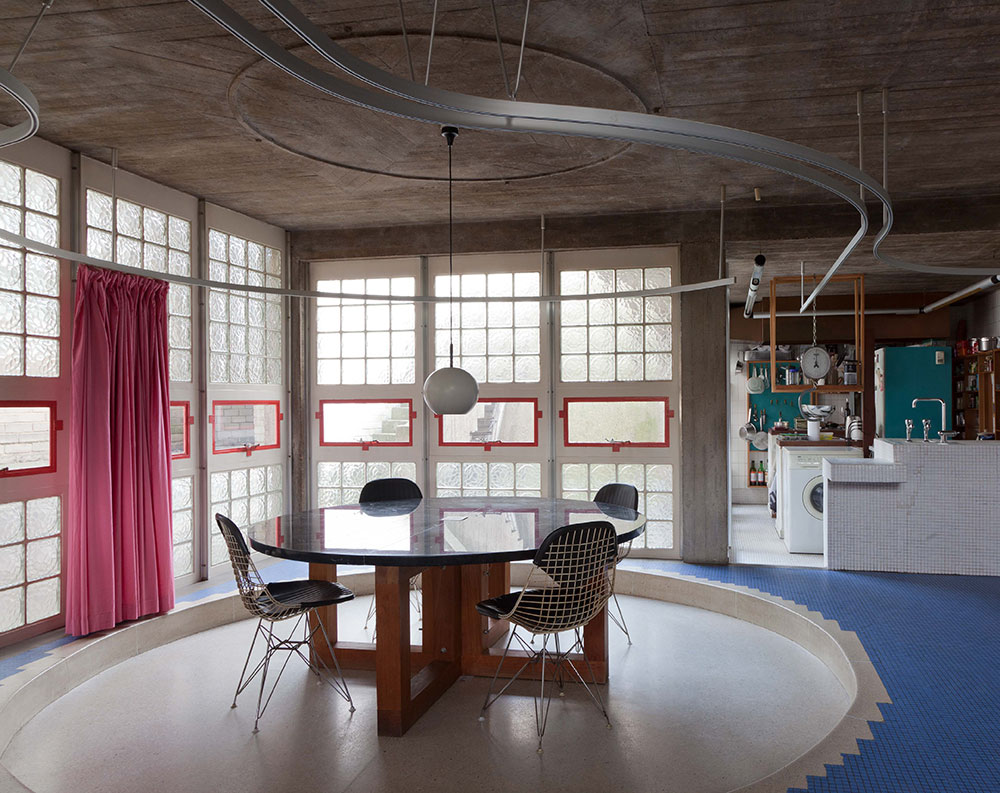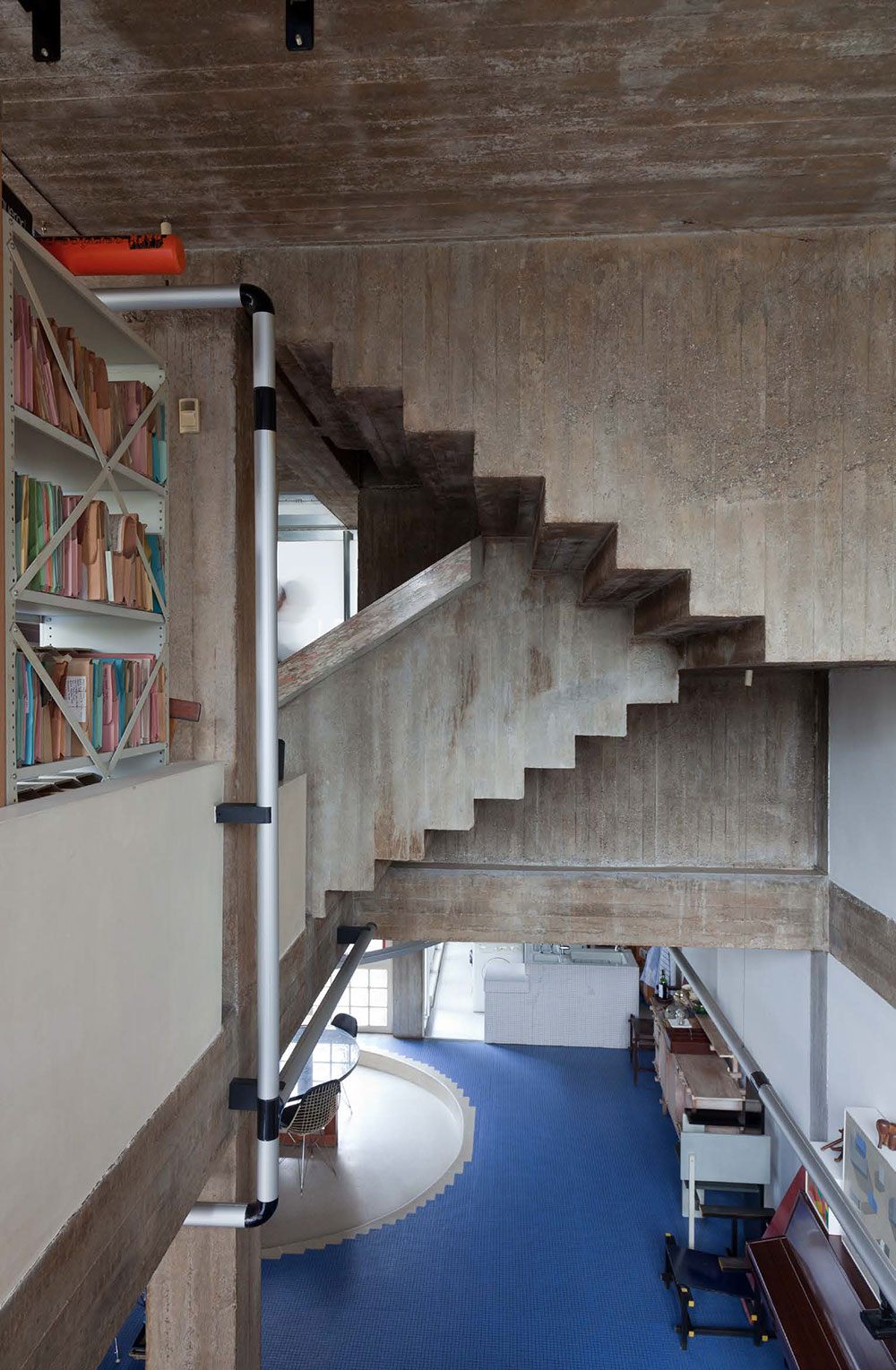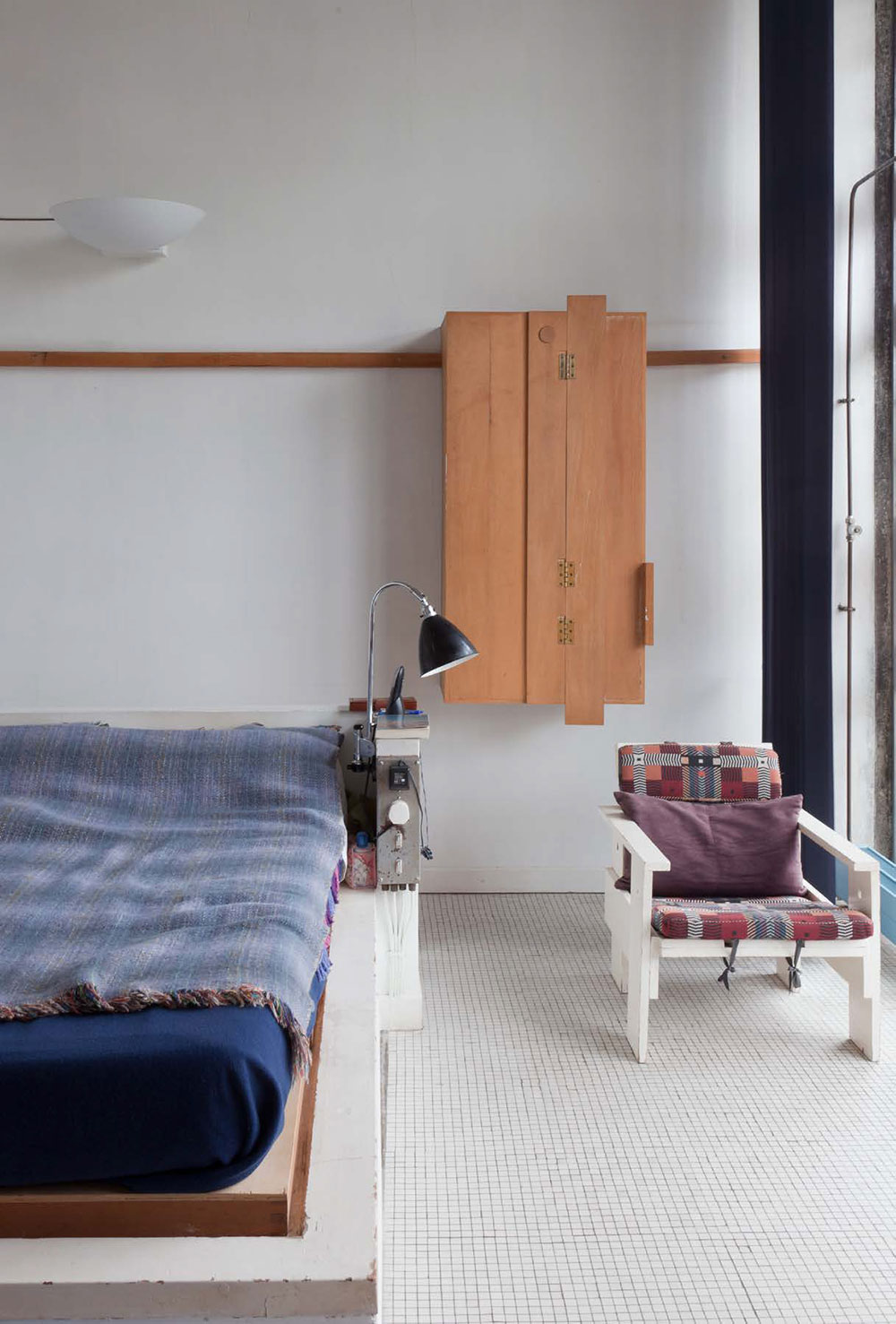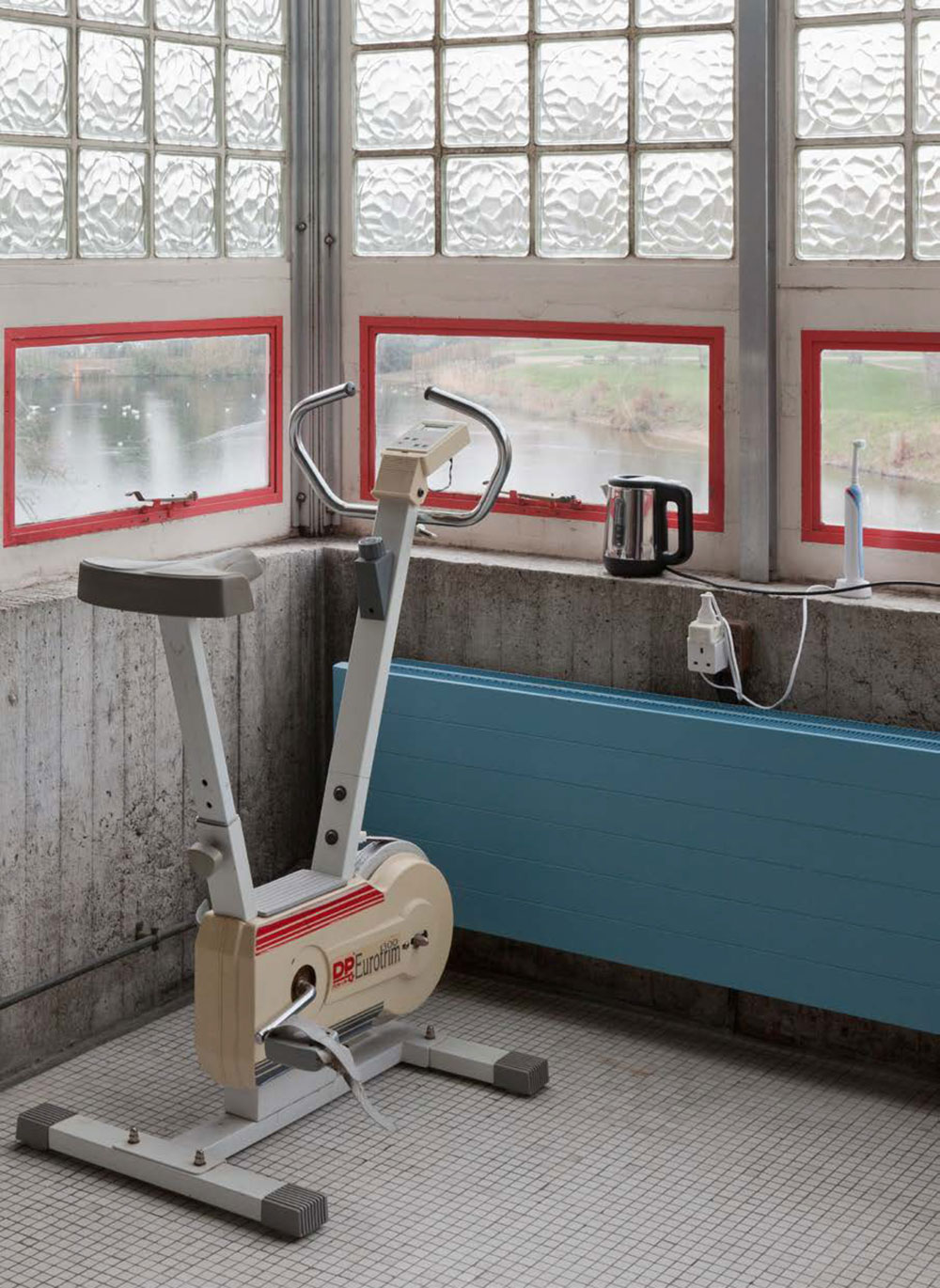Inside Brian Housden’s masterpiece of British modernism
A meeting with De Stijl master Gerrit Rietveld inspired architect Brian Housden (1928-2014) to throw away the timid first drafts of his London home – and instead design one of Britain’s first brutalist dwellings. In November 2014, 78 South Hill Park achieved Grade II-listed status, the same week that the late architect passed away

Hampstead Heath’s 78 South Hill Park doesn’t look like a house born of embarrassment, but that is exactly what it is. In the 1950s, architect Brian Housden visited Dutch De Stijl master Gerrit Rietveld (who played roughly the role in architecture that Mondrian played in painting) and, when they parted, Rietveld told Housden he’d love to see the plans of the Hampstead house he was working on. Housden said he was mortified, ashamed of the timid designs he had drawn and decided to start over. Rietveld never saw the drawings, but the result is extraordinary – a brutalist house on the edge of Hampstead Heath that is one of London’s most surprising and inventive post-war dwellings.
The 1924 Rietveld Schröder House, which so inspired Housden, is always photographed as a freestanding, almost autonomous building, but, in fact, bookends a dull brick Utrecht terrace. Similarly, Housden’s house squats between a pair of more conventional modernist blocks (including one by Howell, Killick, Partridge & Amis, architects of London’s Young Vic theatre), its muscular concrete frame seeming to push them apart, to defy them to crush it.

The dining area, with its slate-topped table by Housden, is set in a sunken circular space. Pink curtains on a swirling rail can be drawn to section it off
Hampstead had become a bit of a repository for modernist houses at the time, a liberal enclave in London in which architects were allowed to experiment in a rather genteel, rather English way. Even arch-brutalist Ernö Goldfinger, architect of the Trellick Tower, designed his own house as part of a genteel, Georgian-influenced terrace. But Housden stood firm. His house was to be the real deal – a brutalist shell to foreshadow the concrete cultural landscape of the South Bank that would be built a few years after the house was started. Housden’s house ushers in the heroic age of British architecture, arguably the only modernist moment in which Britain genuinely led the world.
It’s obvious at first sight that the house is omnivorous; it has consumed everything. There’s Le Corbusier in the béton brut, Giuseppe Terragni in the complex deconstruction of the cube, Aldo van Eyck in the coarse contextualism, Frank Lloyd Wright, the Amsterdam School, perhaps even Carlo Scarpa in the modelled-concrete number 78. But most of all, in the steel-framed panels of glass, is the ghost of Pierre Chareau’s 1932 Maison de Verre in the courtyard of a Parisian apartment block, which Housden admits as his other great inspiration.

The raw concrete of the staircase contrasts with a recently added lush marble handrail and the blue tiles of the living-area floor
The pull-handle on the door that greets the visitor is inscribed with a quote from Heraclitus, in Ancient Greek, about the world being a unity of diversity, about simultaneously everything agreeing and disagreeing (it’s a long handle). Inside, an interior of simultaneous real weight and incredible lightness is revealed, a contradiction of which Heraclitus would have been proud. Inside, it is far more Chareau than Rietveld – the exposed pipes, the industrial materials, the bare concrete, the painted steelwork.
The client for Chareau’s Maison de Verre was a gynaecologist and the building was an expression of hygiene, modern efficiency and decorum – clear, clean and light – but not transparent. Housden doesn’t seem to have had the same motivations. He says he had an unsettling time while building the house. It became the last thing, the only thing, he ever built in this style. Perhaps it is the expression of some kind of deep existential angst, a hint of darkness, that makes it stand out in prissy Hampstead.

The master bedroom with Rietveld’s 1934 ‘Crate’ chair.
The interior is far less purely functional than Chareau’s influence would at first suggest. There are glimpses of archaic symbolism throughout. On the threshold, a single Greek key wraps around itself in what is surely a reference to the waves of Roman floor mosaics, the level floor as a metaphor for the waters of chaos being calmed by habitation. And all around the house are large circles inscribed on the ceilings. ‘Mandalas,’ says Housden without a blink. There’s one over the carport, one over his desk, another over the dining area and yet more upstairs. They look oddly incongruous in the otherwise brutalist setting, a strange echo of ancient myth. But, in fact, they are perfectly coincident with the often forgotten occult origins of modernism. From Mondrian’s theosophy to Kandinsky’s monkish mysticism, the birth of modernism is swirling with symbols and eclectic pseudo-religiosity, an attempt to replace the world religions with a new, Steiner-esque paean to the clarity of creativity.
The most oddly dramatic area in the house is the dining space. The visitor descends a heavy suspended concrete staircase into a capacious downstairs living area in which the space flows from the kitchen at one end past an offset dining area all the way through to a small garden at the other end of the house. The sunken circular dining area, one step below floor level, presents a theatrical space in which the ritual of eating is celebrated in the architecture as well as the furniture. A glass globe pendant light hangs from the middle of a ceiling mandala, above a slate-topped circular dining table that was designed by Housden (he is a self-taught woodworker, as well as an architect). Just beyond is a seating area with chunky, built-in furniture unlike anything you’ve ever seen before – a white structure upholstered with purple cushions, with a background of pink drapes and an orange-painted concrete column, all set against blue floor tiles. Much of the other furniture is by Rietveld – originals that were given to Housden by the architect and his craftsmen.

Pierre Chareau’s Maison de Verre inspired the steel-framed windows.
Elsewhere in the house there are odd touches of colour and luxury that stand deliberately apart: the lush marble on the concrete handrails of the stairs (a more recent addition) evokes Adolf Loo’s distinctive combination of asceticism and decadence; a flash of Rietveld colour draws the eye up the stairs; the kitchen units are built up into a cityscape of mosaic-tiled structures; boxy plywood furniture frames everyday household items into exhibits of the mundane. The garden, meanwhile, which opens onto the Hampstead Ponds in an oddly sylvan continuity, is centred upon a small circular pool, echoing the mandala motif, as well as the work of Scarpa.
Each room is deceptively complex. Everything at first feels Spartan and simple, but then leads into a maze of ensuite bathrooms and showers, spaces often without doors yet completely discreet. There are hints of Scarpa’s finely detailed and intriguing landscapes, drawing the eye along with their sculptural intricacy.

The garden opens onto the Hampstead Ponds
It is virtually impossible to describe the invention and originality on show. Even if nearly everything evokes the work of some other master, the house is an extraordinary personal statement of intent. Perplexingly, it was recently refused a listing. Perhaps because its architect never went on to other things, it is deemed a cul-de-sac. In fact, it is the singular work of an incredibly fertile mind, a building that pinpoints a moment in which Britain was at the forefront of a rethinking of the aesthetics and meaning of modernism, which makes its survival all the more critical.
As originally featured in the May 2011 issue of Wallpaper* (W*146)
Receive our daily digest of inspiration, escapism and design stories from around the world direct to your inbox.
Edwin Heathcote is the Architecture and Design Critic of The Financial Times. He is the author of about a dozen books including, most recently 'On the Street: In-Between Architecture'. He is the founder of online design writing archive readingdesign.org and the Keeper of Meaning at The Cosmic House.
-
 Art and culture editor Hannah Silver's top ten interviews of 2025
Art and culture editor Hannah Silver's top ten interviews of 2025Glitching, coding and painting: 2025 has been a bumper year for art and culture. Here, Art and culture editor Hannah Silver selects her favourite moments
-
 In Norway, remoteness becomes the new luxury
In Norway, remoteness becomes the new luxuryAcross islands and fjords, a new wave of design-led hideaways is elevating remoteness into a refined, elemental form of luxury
-
 The rising style stars of 2026: Oscar Ouyang is taking knitwear into new realms
The rising style stars of 2026: Oscar Ouyang is taking knitwear into new realmsAs part of the January 2026 Next Generation issue of Wallpaper*, we meet fashion’s next generation. Born in Beijing, Central Saint Martins graduate Oscar Ouyang is inspired by anime, medieval folklore and his friends’ wardrobes
-
 This curved brick home by Flawk blends quiet sophistication and playful details
This curved brick home by Flawk blends quiet sophistication and playful detailsDistilling developer Flawk’s belief that architecture can be joyful, precise and human, Runda brings a curving, sculptural form to a quiet corner of north London
-
 A compact Scottish home is a 'sunny place,' nestled into its thriving orchard setting
A compact Scottish home is a 'sunny place,' nestled into its thriving orchard settingGrianan (Gaelic for 'sunny place') is a single-storey Scottish home by Cameron Webster Architects set in rural Stirlingshire
-
 Porthmadog House mines the rich seam of Wales’ industrial past at the Dwyryd estuary
Porthmadog House mines the rich seam of Wales’ industrial past at the Dwyryd estuaryStröm Architects’ Porthmadog House, a slate and Corten steel seaside retreat in north Wales, reinterprets the area’s mining and ironworking heritage
-
 Arbour House is a north London home that lies low but punches high
Arbour House is a north London home that lies low but punches highArbour House by Andrei Saltykov is a low-lying Crouch End home with a striking roof structure that sets it apart
-
 A former agricultural building is transformed into a minimal rural home by Bindloss Dawes
A former agricultural building is transformed into a minimal rural home by Bindloss DawesZero-carbon design meets adaptive re-use in the Tractor Shed, a stripped-back house in a country village by Somerset architects Bindloss Dawes
-
 RIBA House of the Year 2025 is a ‘rare mixture of sensitivity and boldness’
RIBA House of the Year 2025 is a ‘rare mixture of sensitivity and boldness’Topping the list of seven shortlisted homes, Izat Arundell’s Hebridean self-build – named Caochan na Creige – is announced as the RIBA House of the Year 2025
-
 In addition to brutalist buildings, Alison Smithson designed some of the most creative Christmas cards we've seen
In addition to brutalist buildings, Alison Smithson designed some of the most creative Christmas cards we've seenThe architect’s collection of season’s greetings is on show at the Roca London Gallery, just in time for the holidays
-
 In South Wales, a remote coastal farmhouse flaunts its modern revamp, primed for hosting
In South Wales, a remote coastal farmhouse flaunts its modern revamp, primed for hostingA farmhouse perched on the Gower Peninsula, Delfyd Farm reveals its ground-floor refresh by architecture studio Rural Office, which created a cosy home with breathtaking views